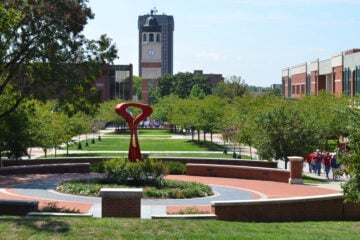Analysts call for change in pubTV workforce, culture under ATSC 3.0 standard
BALTIMORE — The upcoming transition to a new digital television standard will require a cultural shift within public television, station executives heard during a meeting examining opportunities and challenges of the new technology.
ATSC 3.0, developed by the Advanced Television Systems Committee, is set for release as early as next year. In addition to providing greatly enhanced video and audio as well as interactive capabilities for viewers, the standard “has implications for the kind of people we hire and the culture that we’re building in organizations,” said Vinnie Curren of Breakthrough Public Media Consulting.
Public Media Co. and Curren’s firm on Thursday sponsored the first of three meetings exploring service strategies for public TV stations under the new standard.
Some 25 executives gathered to hear presenters including Marc Hand, c.e.o. of PMC; Lonna Thompson, e.v.p. of America’s Public Television Stations; John Lawson, executive director of AWARN (Advance Warning and Response Network) Alliance; and Skip Pizzi, formerly of NPR, now senior director of new media technologies at the National Association of Broadcasters.
The new standard means that soon television will become “a key part of a network infrastructure in the home,” Curren said. “TV will become an app.”
In addition to improved picture and sound, stations will have the ability to create special subscriptions for viewers — maybe a pledge-free stream. Or generate commercial revenue by using bandwidth for services such as switching on irrigation systems in rural areas.
Bandwidth allocation will go beyond an engineer’s purview to become a management task, Curren said. “A lot of our culture is driven by our equipment,” he said. ATSC 3.0 presents changes in many aspects of public broadcasting such as journalism, community engagement, local partnerships, education and marketing. “It’s challenging to make that pivot,” he said.
Curren and Hand are convening the meetings to help pubcasters brainstorm ideas for how best to take advantage of the new standard. The technological advance presents huge potential: ATSC 3.0 will allow a station in a market with 14 transmitters to have 39 ultra-high definition channels or 81 high-definition channels or 350 standard definition channels.
How about a “conductor cam” for live music performances? Other ideas include partnerships with local colleges for distance-learning or with professional associations for certification classes. Over-the-top broadcast channels can provide niche subscription services for special-interest hobbyists. Subscribers may enjoy enhanced content such as director’s cuts of documentaries. Geo-targeted content can go to specific neighborhoods.
Stations are already pushing into new projects. ValleyPBS in Fresno, Calif., built a special database linked to the local school system to warn students about foggy conditions, said Shadi Sabra, v.p. of technology and broadcast operations. “In Fresno, there’s a lot of fog and it can be dangerous” as kids head to school, he said. The school system pays ValleyPBS a fee so kids can access the database to check on the conditions. The Foggy Day Service is linked to more than 70 local schools to provide live weather updates on-air, online or through an app.
The transition from the current standard to ATSC 3.0 presents other revenue opportunities. Each television market will need a “lighthouse” station, Curren said, to broadcast the old 1.0 standard for consumers that don’t yet use 3.0-compatible sets. Commercial stations will want to take full advantage of ATSC 3.0 so they will want to pay another station to fulfill that requirement. Public TV could charge local stations to carry that channel.
Lawson presented examples of robust possibilities for emergency communications. Just this week, a simple 90-character wireless emergency alert led to an arrest in the recent New York and New Jersey bombing cases. Enhanced messaging carried over public TV bandwidth could provide more details such as photos of suspects or vehicles used in crimes, Lawson said. AWARN messages reach smart TVs, tablets and smartphones independently of cell networks, which often exceed capacity during emergencies.
Emergency communications work ultimately dominated the conversations during Thursday’s meeting. Participants noted this necessary public service also fits into public broadcasting’s community-oriented mission. A proposal to allocate some of public TV’s expanding channel capacity to emergency communications is already under consideration; APTS members voted at their Public Media Summit in February to each set aside 1 megabit per second of spectrum for emergency and public-safety communications.
“We may need to look at multiple models,” said Andy Russell, president of PBS SoCal. “In our case, Los Angeles County developed a robust group post 9/11 around homeland security. So public TV’s role could be more supportive. We can look at models where we can lead, be a main provider or a supporter.”
Tom Axtell, g.m. of Vegas PBS, said the station has three emergency communications contracts and is hoping to add more. When 50,000 fans turn up at the NASCAR track there, “nine law enforcement agencies can’t talk to one another,” Axtell said. Vegas PBS can offer those agencies “one ubiquitous datastream unaffected by all the cellphone users at the track.”
The ATSC 3.0 meetings continue Oct. 18 and 19 in Detroit, and Nov. 9 and 10 in Las Vegas.






